Customer Service Programs = Higher Occupancy
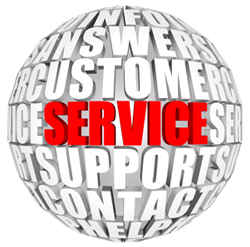
Your community is more than bricks and mortar, square footage, and service fees. It’s a feel that prospects get when they come through the door. It’s a feel that comes from the way they’re greeted and the way they see staff interacting with residents, and with each other.
Do your prospects feel that they are a part of something special?
At Hamlyn, we believe a thoughtful, positive, skills-based customer service program is an integral part of the marketing effort. Our program was developed by CEO Cathy Martin, whose extensive career in health care marketing and management included several years as the Director of Employee Development at Graduate Hospital in Philadelphia.
In fact, we think customer service is so important that we’re offering our guide, “Developing Customer Service Programs That Work” at no charge. Just scroll down the page, or click here to download a complimentary copy.
Happy Residents = Higher Occupancy
The atmosphere you create in your community is the primary differentiation between your community and the prospect’s home. It’s also the primary differentiation between your community and your closest competitors in a tight market.
And, word-of-mouth and resident referrals are the least expensive and most likely to yield a move-in. Retirement communities make the most of their best referral source with a strong, consistent customer service program.
That’s why a strong, positive customer service program should be a part of every community’s marketing effort.
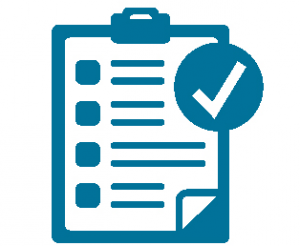
Hamlyn’s Free Guide to Designing Customer Service That Works
You can view our guide below, including training materials, or download the PDF. For customized customer service training programs, please contact Cathy Martin at 856-857-0800. Or, email cmartin@hamlynmarketing.com
-
Designing Customer Service That Works: Introduction
Customer service is an integral component of a community’s marketing and management. A strong, well implemented customer service program empowers employees, improves efficiency, and most importantly makes residents happier while contributing to better occupancy. Following are the components of a successful customer service program, beginning with recommendations for the concepts a management team should have in place. Included in this document you will find training and management principles, also, a basic outline of customer service training.
-
Part 1 – Designing Customer Service That Works: The Foundation
The first steps in developing a customer service program are identifying the customers, identifying the key concepts behind service, and developing a statement about service for your organization.Who is the customer?
 The customer is everyone who has contact with your organization:
The customer is everyone who has contact with your organization:- Prospects
- Residents
- Co-workers
- Vendors
- Community at Large
What is Customer Service?
Customer service is a culture that extends to everyone who has contact with the organization: prospects, residents, families, employees, vendors, and the outside community. All who are part of the organization demonstrate that culture with:
- Attitude
- Taking initiative
- Listening to concerns, and confirming and acknowledging concerns
- Being accountable
Create a statement concerning customer satisfaction for your organization.
_________________________________________________________________________________________________________
Demonstrating Good Customer Service
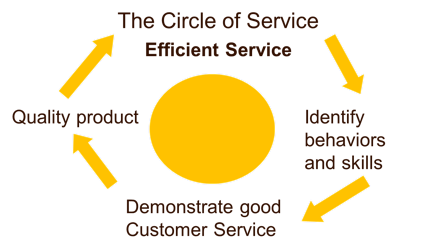
Use this as a symbol for creating the standards of behavior that are best for your community. These skills should be developed and identified by your staff. They will have greater buy-in and ownership of the concept if they are part of the planning .
Why are customer service and common courtesy so critical in today’s market?
- Most customers need to feel special and the only way to achieve this is with outstanding customer service.
- How special your customers feel when they are in your community is what sets you apart from your competition, especially in a market with many options.
- It takes more than “bricks and mortar” to make a home.
Go beyond average and stand out: create an environment that enhances lifestyle by making your customers feel special.
Customer Service is a Team Effort
The joint effort of the team gives confidence to the casual observer and inspires confidence. And, each person on the team is empowered to identify their role and the responsibility of that role.
-
Part 2 – Creating An Environment Where Service is Paramount: Hiring, Evaluating, Honoring, and Training the Best
Hiring for Customer Service: Only the Best Will Do
Look for good common courtesy and select only those people who extend themselves. As a group, identify those skills that everyone on the team agrees are essential for the best behaviors. Get only your best to be on an interviewing team.
We know of one organization that will call applicants with a wrong number, just to observe whether their response is friendly, helpful and kind. If the response is lacking, the applicant is not called back for an interview.
- Hire for attitude, train for skills
- Recruit your own job applicants
- Create a “hiring team” for the interview process.
When you can, recruit. Don’t hesitate to interview someone you view as having the right attitude, even if they require skills training.
Develop “Shared Values” of Your Organization
Start with a small group and grow with about 10% of your organization to assess their understanding of quality. Involve all levels, including management and front line staff. Shared values must be a part of your culture and your mission.

- Establish shared values that have the greatest impact on service.
- Identify shared values in the first day orientation.
- Provide constant access to written reminders of shared values.
- Adapt the “lead by example” motto.
Evaluating Standards of Behavior: Why Is It Important to Measure Quality?
Evaluations of behavior provide standards for growth, and set examples of excellence for above average employees. Evaluation shows employees where they are succeeding, and where they need support. Assist those employees who need additional support.
Everyone has a different definition of quality. Ask your employees how they evaluate quality, and why.
Measuring Quality Service
- Identify and write policy for actions and behaviors that most impact resident satisfaction
- Measure performance
- Announce publicly “best of residents’ satisfaction.”
Evaluations and measurement tools are the basis for good customer service. These impact overall employee evaluations, and each employee should be held accountable for their behavior
Employee Development and Incentive Programs: Honoring the Best
The goal of customer service is to make people feel special, and employees are customers. Development and incentive programs honor and reward the special contributions of employees.
Employee Development Programs
Incentive Programs
- Reward with a cash bonus and/or prize for achieving specific, pre-determined goals.
Brainstorming Customer Service Concepts
Following are customer service concepts to brainstorm with your team. These are examples of concepts that form the basis of rewards and recognition.
- Number of good ideas submitted (and eventually implemented) by an individual or department
- Use of specific courtesy skills during “mystery customer” evaluation reports
- “Exceptional Performance” awards; nominations submitted by residents
- Recognition system for employees demonstrating best resident service standards
- Guest surveys and/or letters concerning positive behavior
- “Special Resident” recognition for those who serve only internal customers.
Implementing Ongoing Service Training
Great customer service practices are just that… practices. They require ongoing training and re-enforcement. To get the most out of a customer service model, incorporate the following items into ongoing training.
- Classroom-style training, including identifying standards and values of the organization; overall concepts such as the importance of making everyone, including staff, feel special; the importance of taking initiative; and examples of specific behaviors.
- Include all departments in orientation
- Include other departments in specific seminars and individual department trainings
- Support materials such as written guides, video guides, and guides for role-playing activities.
-
Part 3 – Managing to Improve Service Efficiency
Identify the Significant Contributions of Front-line Employees
Front-line employees have greater daily contact with residents and customers, and demonstrate the attitude and behavior of the community’s policies and procedures.
- Develop a grievance system
- Allow for input from front-line employees.
Teamwork
 Everyone faces challenges in their jobs. Understanding each other’s challenges and keeping lines of communication open is critical to maintaining goodwill among employees.
Everyone faces challenges in their jobs. Understanding each other’s challenges and keeping lines of communication open is critical to maintaining goodwill among employees.- Facilitate friendly communication with co-workers, with additional training if needed
- Encourage offering assistance in times of need
- Understand that things can go wrong, and focus on remediating the situation.
Definition and Criterion for Empowerment
Empower means to authorize or allow. Empower your employees by encouraging them to:
- Be flexible whenever possible
- “Just say yes”
- Develop healthy, productive boundaries with residents and other staff
- Understand when to go to a supervisor or manager for advice
- Review problem areas with management.
Encourage Employees Who Take Initiative
Empowered employees take initiative! Employees with initiative demonstrate the following behaviors.
- Provide feedback and clarification to management when things go wrong
- Let supervisors know when policies and procedures are misunderstood
- Share ideas for improving facilities, services, polices and procedures
- Make use of resident council as a means to follow-up on complaints and concerns.
-
Part 4 – Customer Service Behaviors
This section includes an outline that can be adapted by your community to use as a foundation for training. It addresses the following day-to-day activities and staff behaviors that create a culture of customer service.
- Thinking like a resident
- Dressing the part
- Extending warmth and caring
- Using names
- Kindness
- Telephone techniques
- Anticipating needs
- Responding to complaints
- Dealing with upset and angry people
- Going the extra mile
1. Think Like a Resident
How do residents feel and what worries do they have?
_________________________________________________________________________________________________________
2. Invest in your personal appearance.
- Dress like a professional and you will be respected as one.
- Personal hygiene is a must.
- You feel good when you look good.
3. Extend Warmth and Caring
Be open and welcoming; use positive body language.
- Confident posture
- Gestures of concern and interest
- Make eye contact
- Smile often!
Greet others before they greet you.
- Use an enthusiastic greeting every time.
- Behavior reflects behavior; you’ll usually lead others to react in a positive manner.
- Offer assistance before you are asked
- Escort visitors to the requested destination to show care and concern. Avoid pointing and telling instructions.
4. Commit Names to Memory
- Calling people by name makes them feel special!
- Say a person’s name three times in the first meeting to commit it to memory.
5. Use Positive Language
Avoid using this phrase: Instead, try this phrase: “Let me get back to you.” “I will check on that for you.” “You’ll have to…” “May I ask you to…” “It’s not my job.” “I’ll send someone right over.” “Nobody came in today.” “Sorry for the delay, everything seems to have happened at once…” “No problem.” “You’re welcome.” Don’t Do Whisper in the presence of residents and visitors. Speak clearly, or in private if necessary. Speak about resident’s personal issues in public areas. Use discretion and maintain privacy. Talk down to people. Find a private place to sit down face to face and sincerely help. Your Own Examples
___________________________vs. ___________________________ ___________________________vs. ___________________________ ___________________________vs. ___________________________
6. Telephone Techniques
 Smile when you speak on the phone. A smile has a sound!
Smile when you speak on the phone. A smile has a sound!Describe telephone manners.
______________________________________________________
___________________________
___________________________
___________________________
Positive Telephone Techniques
- Use an appropriate greeting, including your name.
- Speak at a moderate rate and tone.
- Let the caller finish their statement or question without interrupting.
- Ask permission to place callers on hold: wait for a response.
- Assume responsibility for follow-up: avoid unnecessary transfers.
- Introduce both parties when transferring calls.
- Notify callers that they are being transferred to voicemail.
- Let callers hang up first.
Residents and visitors sometimes need help with:
- Knowing what to ask or who to seek out when something goes wrong.
- Knowing what their needs are.
- Feeling comfortable asking for needed assistance.
7. Anticipate Needs with Understanding and Sensitivity
Some residents may have difficulty explaining their needs. Protect their dignity by allowing them to articulate.
Know your customer!
Use your experience.
Go the extra mile; provide additional information.
Be sensitive to special needs.
8. Respond to Complaints
 Responding to complaints is a natural part of interacting with residents and other staff.
Responding to complaints is a natural part of interacting with residents and other staff.- Don’t take it personally.
- Complaints are opportunities to turn a situation around.
Describe your worst possible complaint.
___________________________
___________________________
___________________________
___________________________
___________________________
Remember The Golden Rule: The customer is always right!
9. Dealing With Upset and Angry People
What choices do we have in dealing with difficult people?
___________________________
___________________________
___________________________
___________________________
___________________________
People do not make us angry, upset, or frustrated. We choose to react that way.
Strategies for Dealing with Difficult People
- Allow others to save face. Do not humor or patronize.
- Offer sincere compliments to dissolve negativity.
- Let go of resentments; choose acceptance.
- Understand this is their perception of the problem.
Strategies for Avoiding Incidents of Difficult Behavior with Residents
- Understand and accept that other people may not think like you.
- Take note of individual likes and dislikes.
- Pay close attention to, and if possible, avoid environmental causes.
- Track problems to determine whether there are patterns.
- Focus the resident’s attention elsewhere to defuse problems.
- Be consistent in your reaction and responses to incidents.
Strategies for Coping with Difficult Residents
Following are appropriate ways to handle challenging behaviors when they occur.
- Assess the behavior: determine if it threatens the safety or health of others. If the behavior threatens the health or safety of others, notify your supervisor immediately and take appropriate action to secure everyone’s well-being.
- Do not interrupt; use non-threatening body language.
- Repeat the concerns.
- Identify the feeling.
- Speak simply and clearly requesting the resident’s help.
- Do not defend, talk over or recite policy.
- Use visual aids and gestures to communicate the message.
- Give positive feedback.
10. Go the Extra Mile
Create opportunities to do more than expected. Genuine body language can create a lasting impact. Going out of your way creates good will for everyone.
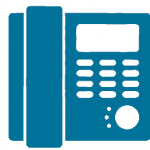 For slide shows, additional materials, or to develop a program customized for your community, call Hamlyn Senior Marketing today at 856.857.0800.
For slide shows, additional materials, or to develop a program customized for your community, call Hamlyn Senior Marketing today at 856.857.0800.


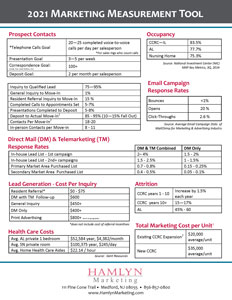 Download the 2021 Marketing Insights and Trends Report
Download the 2021 Marketing Insights and Trends Report Sign up today and receive a PDF copy of Hamlyn’s 2020 Sales Training & Coaching Information
Sign up today and receive a PDF copy of Hamlyn’s 2020 Sales Training & Coaching Information